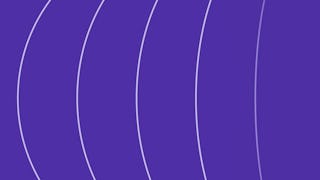In this course, you will learn about software defined networking and how it is changing the way communications networks are managed, maintained, and secured.
6 days left: Get a Black Friday boost with $160 off 10,000+ programs. Save now.


(292 reviews)
Skills you'll gain
Details to know

Add to your LinkedIn profile
14 assignments
See how employees at top companies are mastering in-demand skills

There are 8 modules in this course
This week, I'll introduce an overview of the course and then dive into the history and evolution of SDNs.
What's included
11 videos4 readings2 assignments
In this module, you will learn about the motivation and history behind the separation of the control and data plane, as well as the challenges and opportunities that this architectural paradigm offers.
What's included
8 videos2 readings3 assignments
In this lesson, you will gain experience with OpenFlow/SDN control, gain some exposure to different SDN controllers, learn about the tradeoffs of using different SDN controllers, and gain some experience of using SDN to customize control-plane behavior.
What's included
8 videos1 reading1 assignment
By the end of this module, you should have a good understanding of what network virtualization is, what it is used for, and how it relates to software defined networking.
What's included
11 videos1 reading3 assignments
This module is relatively independent from some of the other modules, as programmable data planes involve new types of technology. Still, you should by now have a very good understanding of SDN-based control and virtualization. OpenFlow's design was somewhat of an accident of the hardware support that was available at the time. More recently, people are exploring how programmable hardware can help us design a control protocol with the benefit of being able to change the data plane.
What's included
10 videos1 reading2 assignments
In this part of the course, you'll learn about programming languages and controllers that make this programmability possible. We will focus on one language in particular, Pyretic, which is from the Frenetic family of languages. We will also look at a runtime and northbound API called Resonance, which allows network programmers to write policies that respond to changing network conditions (e.g., security events, shifts in peak vs. off-peak time, traffic fluctuations or link failures).
What's included
7 videos1 reading1 assignment
In this module, we will apply that knowledge to explore how SDN can be used to solve problems in various networking domains. We'll start by looking at data-center networking, where SDN has arguably gained the strongest foothold (to date). We'll then explore applications of SDN to interdomain routing, where new applications and deployments are emerging. Finally, we'll explore the application of SDN in home networks, which has seen some preliminary work, deployments, and ideas.
What's included
8 videos1 reading1 assignment
In this module, we'll be looking at another control framework built using Pyretic called "Kinetic". Kinetic is a domain-specific language embedded in Pyretic that allows programmers and network operators to automatically verify the correctness properties of the control program. Your previous experience with Pox and Pyretic should provide you with very useful experience and perspective for comparing the three ways of programming a controller. In the assignment, we ask you to compare Kinetic to either Pox or Pyretic, so the experience you gained from those assignments should prove very useful.
What's included
9 videos1 reading1 assignment
Instructor

Offered by
Explore more from Computer Security and Networks
 Status: Free Trial
Status: Free TrialGeorgia Institute of Technology
 Status: Free Trial
Status: Free Trial Status: Free Trial
Status: Free Trial Status: Free Trial
Status: Free Trial
Why people choose Coursera for their career




Learner reviews
292 reviews
- 5 stars
71.91%
- 4 stars
17.46%
- 3 stars
6.50%
- 2 stars
1.02%
- 1 star
3.08%
Showing 3 of 292
Reviewed on Feb 9, 2021
One of the best courses offered by Coursera. Thank you for providing knowledge for free. I am grateful to you guys.
Reviewed on Sep 8, 2020
give a comprehensive overview of SDN networking and provide details about tools and technologies from the state of art.
Reviewed on May 31, 2020
This course has refocused my path in the Networking industry. The information is high quality and the interviews give you a lot of orientation. The course should be more interactive.

Open new doors with Coursera Plus
Unlimited access to 10,000+ world-class courses, hands-on projects, and job-ready certificate programs - all included in your subscription
Advance your career with an online degree
Earn a degree from world-class universities - 100% online
Join over 3,400 global companies that choose Coursera for Business
Upskill your employees to excel in the digital economy
Frequently asked questions
To access the course materials, assignments and to earn a Certificate, you will need to purchase the Certificate experience when you enroll in a course. You can try a Free Trial instead, or apply for Financial Aid. The course may offer 'Full Course, No Certificate' instead. This option lets you see all course materials, submit required assessments, and get a final grade. This also means that you will not be able to purchase a Certificate experience.
When you purchase a Certificate you get access to all course materials, including graded assignments. Upon completing the course, your electronic Certificate will be added to your Accomplishments page - from there, you can print your Certificate or add it to your LinkedIn profile.
Yes. In select learning programs, you can apply for financial aid or a scholarship if you can’t afford the enrollment fee. If fin aid or scholarship is available for your learning program selection, you’ll find a link to apply on the description page.
More questions
Financial aid available,